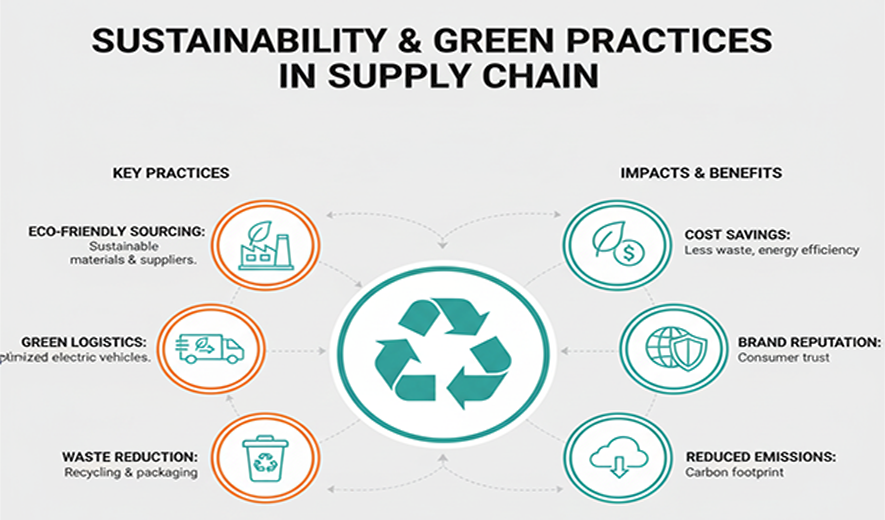
Sustainability & Green Practices in Supply Chain
In modern business, supply chain sustainability is an integrated approach that incorporates environmental, social, and financial considerations into every step of a product's life cycle. This goes beyond "green practices" to include the entire environmental, social, and governance (ESG) performance of the supply chain
Key environmental (green) practices
1. Sustainable sourcing
- Eco-friendly materials: Prioritize raw materials that are renewable, recycled, or have a lower environmental impact during production.
- Supplier evaluation: Use sustainability as a key criterion when selecting suppliers. This includes auditing their environmental practices and adherence to standards like ISO 14001.
2. Green manufacturing
- Energy efficiency: Use smart energy management systems and switch to renewable energy sources like solar or wind power in manufacturing plants and warehouses.
- Waste reduction: Implement lean manufacturing to minimize waste. Adopt closed-loop technology for processes like water recycling to create a more circular economy.
3. Sustainable logistics and transportation
- Route optimization: Use AI-powered Transportation Management Systems (TMS) to plan the most efficient routes. This reduces fuel consumption and carbon emissions.
- Eco-friendly fleet: Transition fleets to electric or hybrid vehicles. For longer distances, explore alternatives like rail or sea transport, which typically have a lower carbon footprint.
- Reverse logistics: Efficiently manage the return, repair, and recycling of products and packaging to minimize waste and repurpose materials.
4. Eco-friendly packaging
- Minimize and optimize: Reduce packaging volume and use right-sized boxes for shipments.
- Use sustainable materials: Opt for biodegradable, reusable, or recyclable packaging materials, such as plant-based plastics or recycled cardboard.
Key technologies enabling sustainability
Technology provides crucial tools for measuring, monitoring, and enforcing sustainable practices.
- Internet of Things (IoT): Sensors and RFID tags can track real-time data on energy usage, emissions, and waste generation across the supply chain.
- Blockchain: A secure, transparent, and unchangeable digital ledger can verify a product's origin and track ethical practices and environmental impact.
- Artificial Intelligence (AI) and Machine Learning (ML): These technologies can analyze large data sets to identify inefficiencies, predict environmental risks, and optimize operations for sustainability.
